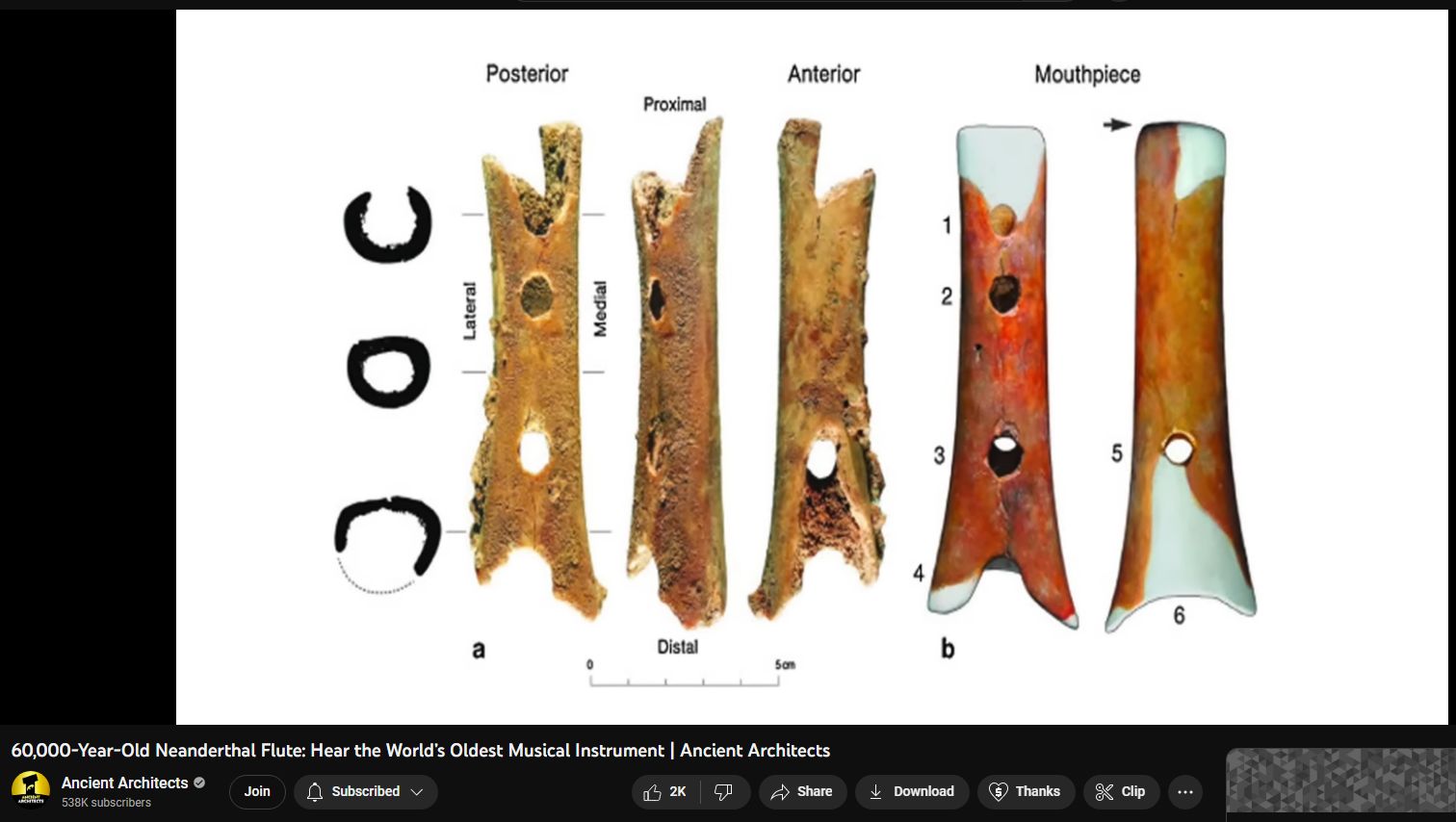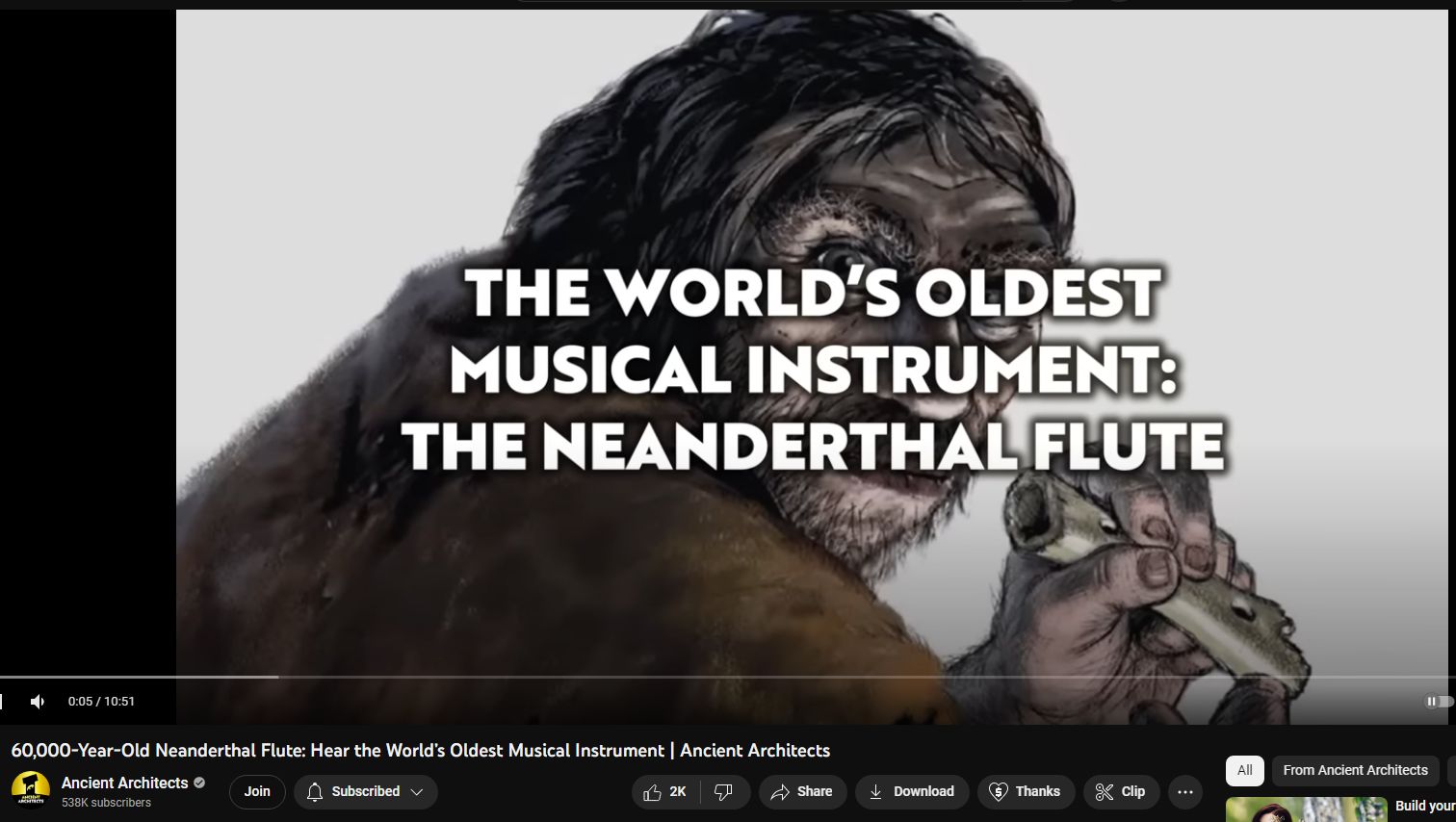60k year old Neanderthal Flute
Listen at ~8:11 in
3D replicas available — wooden/flutey sounding, haunting

60k year old Neanderthal Flute
The discovery of the Divje Babe flute, which is claimed to be the oldest known musical instrument, is indeed a fascinating archaeological find. However, there is some debate and controversy surrounding its interpretation.
Background:
– Discovery: The Divje Babe flute was discovered in Slovenia in 1995 by archaeologist Ivan Turk during excavations of the Divje Babe cave, a Neanderthal site.
– Appearance: The flute is made from the femur bone of a young cave bear and features four holes, which resemble the finger holes of a flute.
– Dating: The age of the flute has been estimated to be around 43,000 to 60,000 years old, placing it within the time period when Neanderthals were known to inhabit Europe.
Interpretation and Controversy:
– Musical Instrument: Some researchers argue that the arrangement of holes and the presence of intentional modifications on the bone indicate that it was used as a musical instrument, possibly for producing sounds similar to those of a flute.
– Natural or Cultural: However, there is significant debate about whether the markings on the bone are indeed evidence of deliberate human modification or if they are the result of natural processes, such as animal gnawing or geological factors.
– Alternative Explanations: Skeptics suggest that the markings on the bone may be the result of carnivore teeth marks or other natural processes. Furthermore, the arrangement of holes may be coincidental rather than intentional.
Significance:
– Cultural and Cognitive Complexity: If the Divje Babe flute is indeed a musical instrument created by Neanderthals, it would provide evidence of their cognitive abilities and cultural complexity, challenging traditional views of Neanderthals as primitive beings.
– Human Evolution: The presence of music-making in Neanderthal societies would also have implications for our understanding of the evolution of music and its role in human societies.
Conclusion:
The Divje Babe flute is a significant archaeological find that has sparked considerable debate and discussion within the scientific community. While some researchers interpret it as evidence of musical expression among Neanderthals, others remain skeptical and argue for alternative explanations. Further research and analysis are needed to conclusively determine the nature and significance of this ancient artifact.
